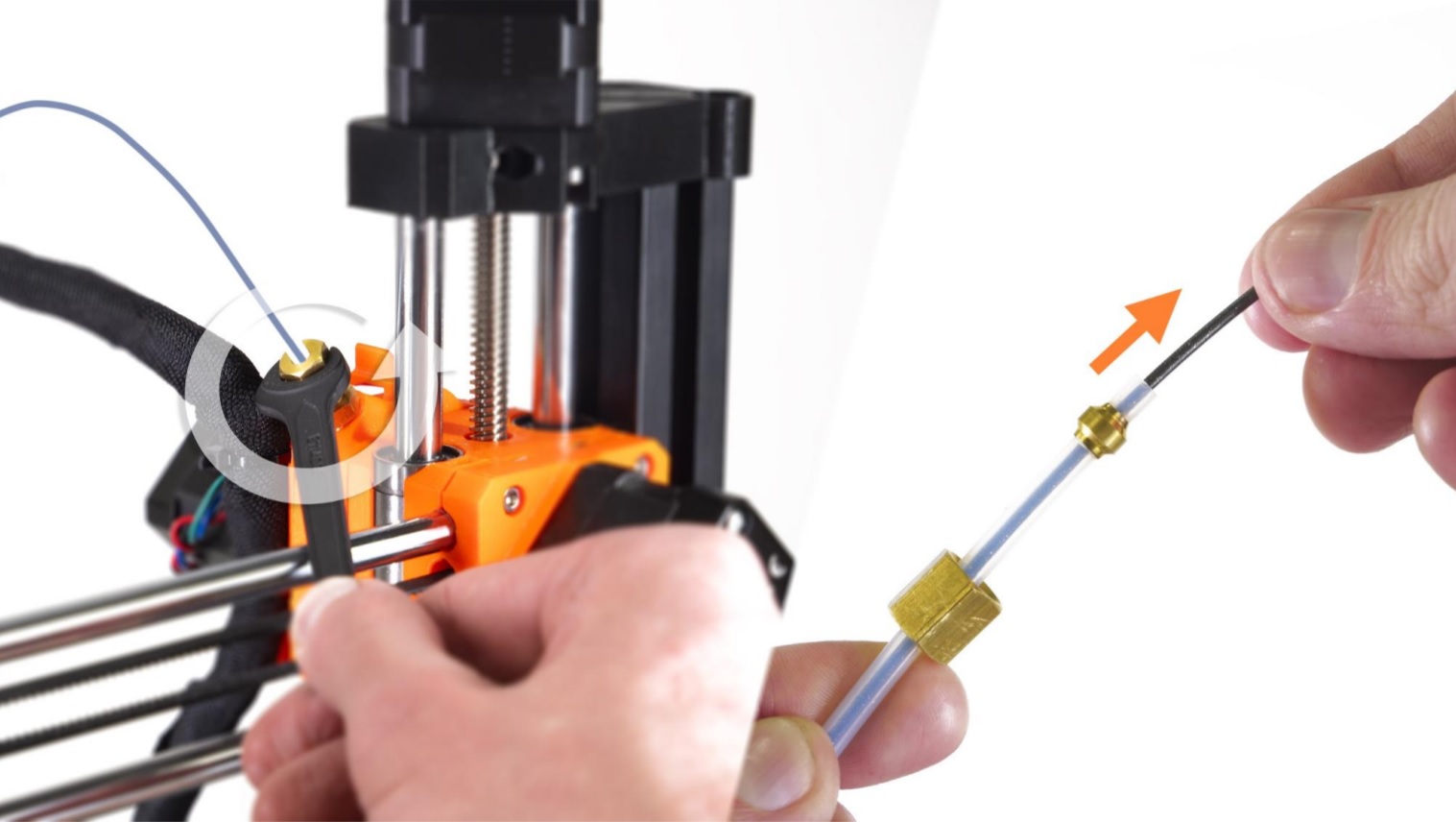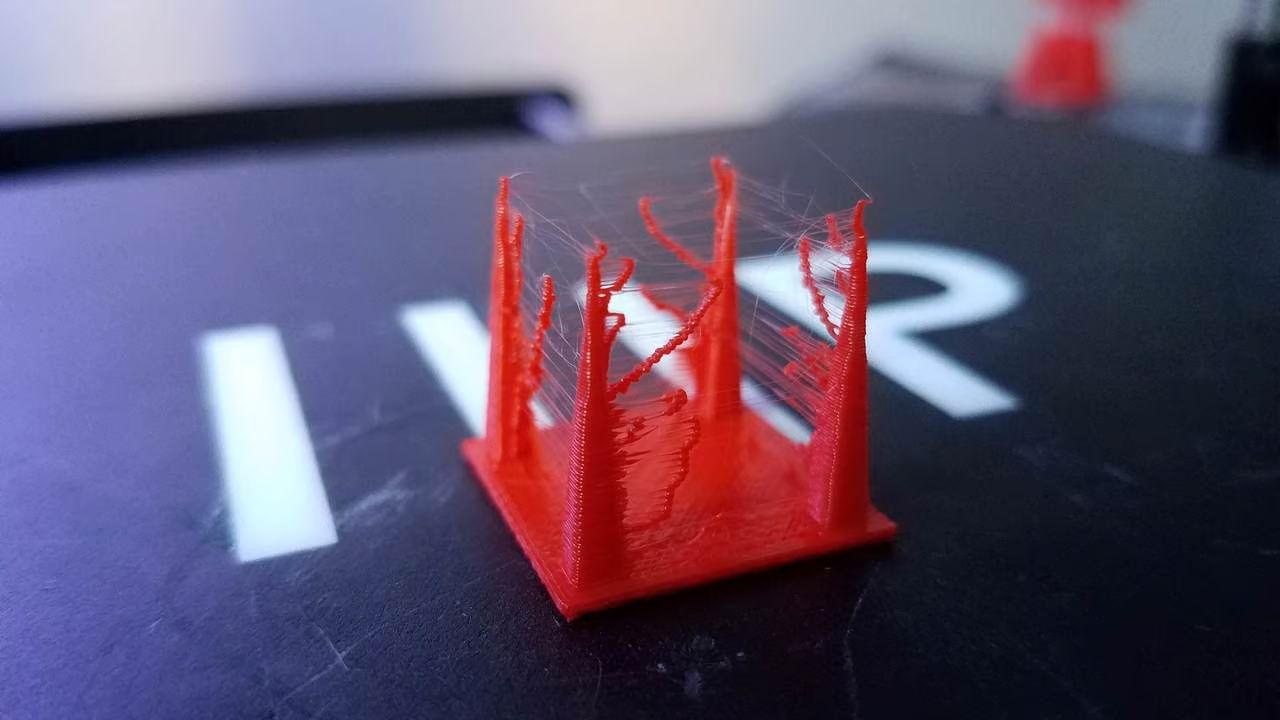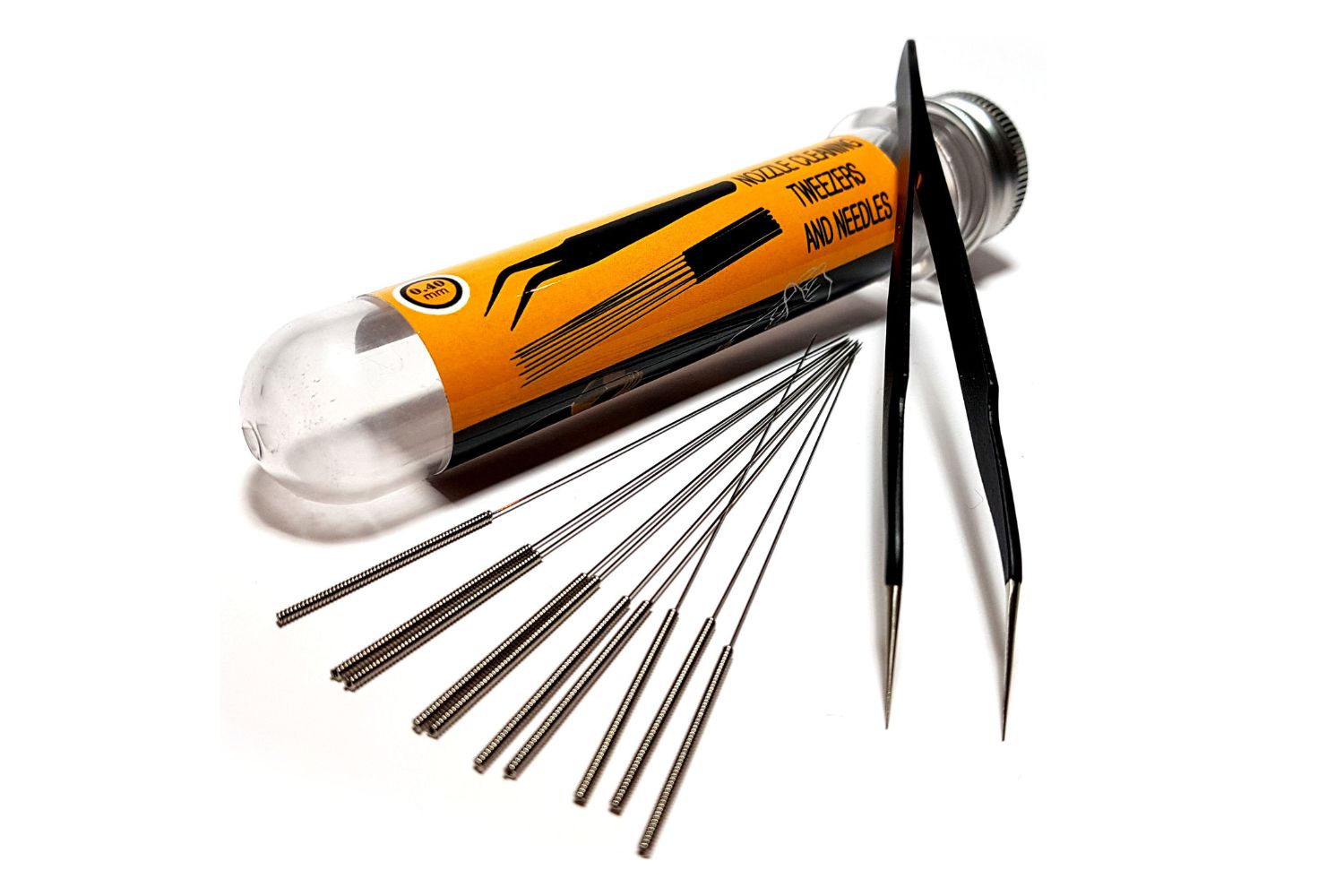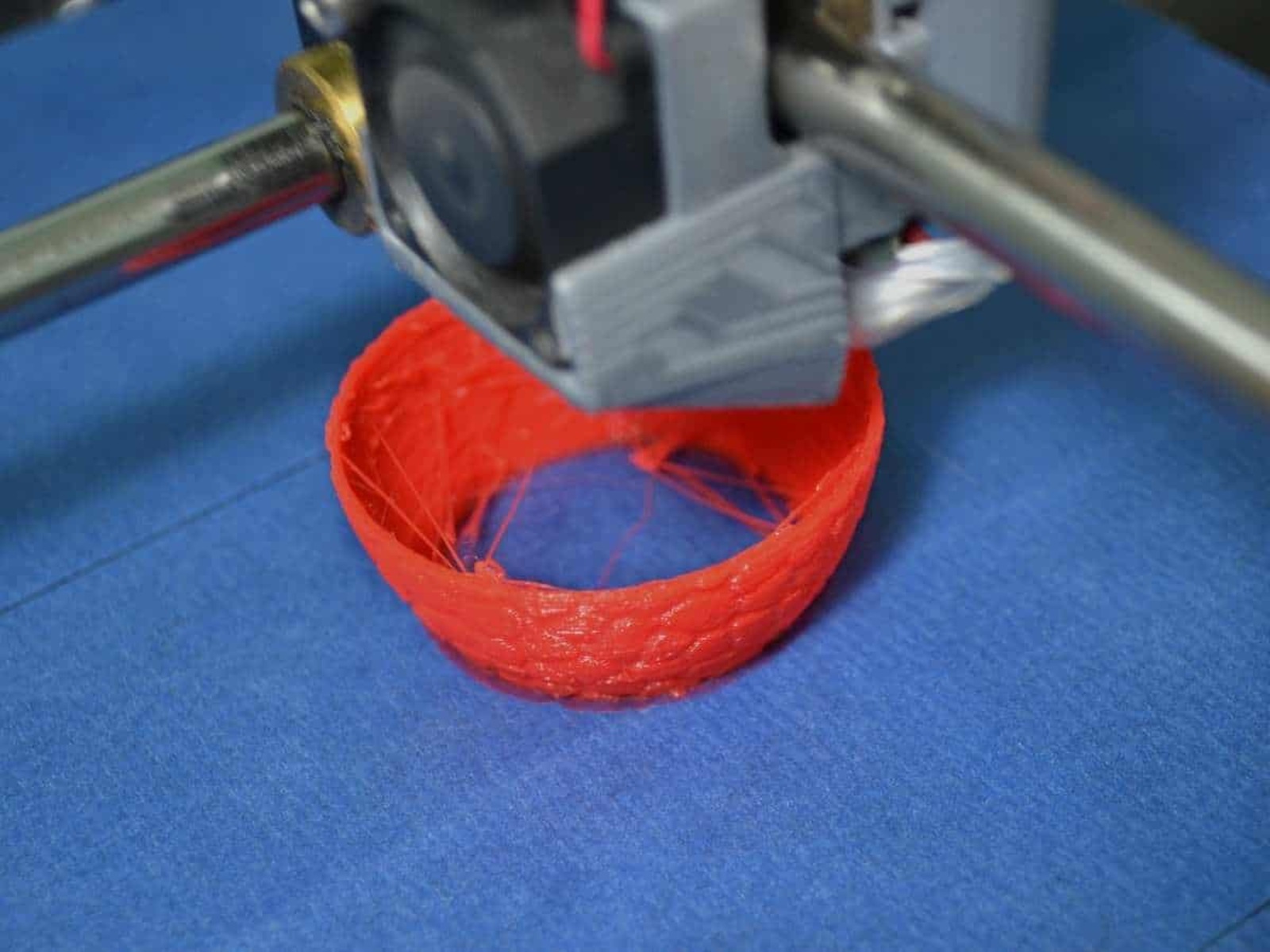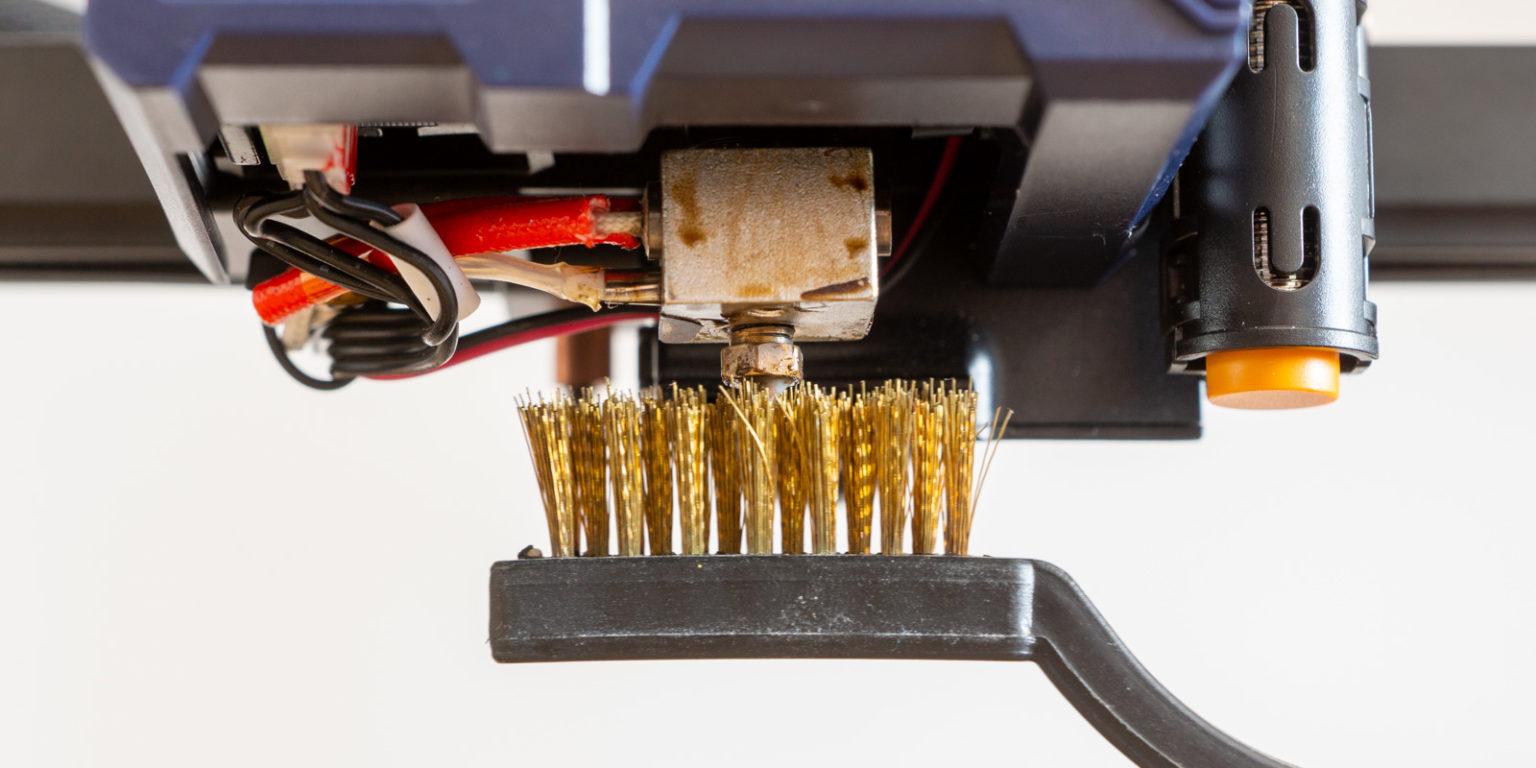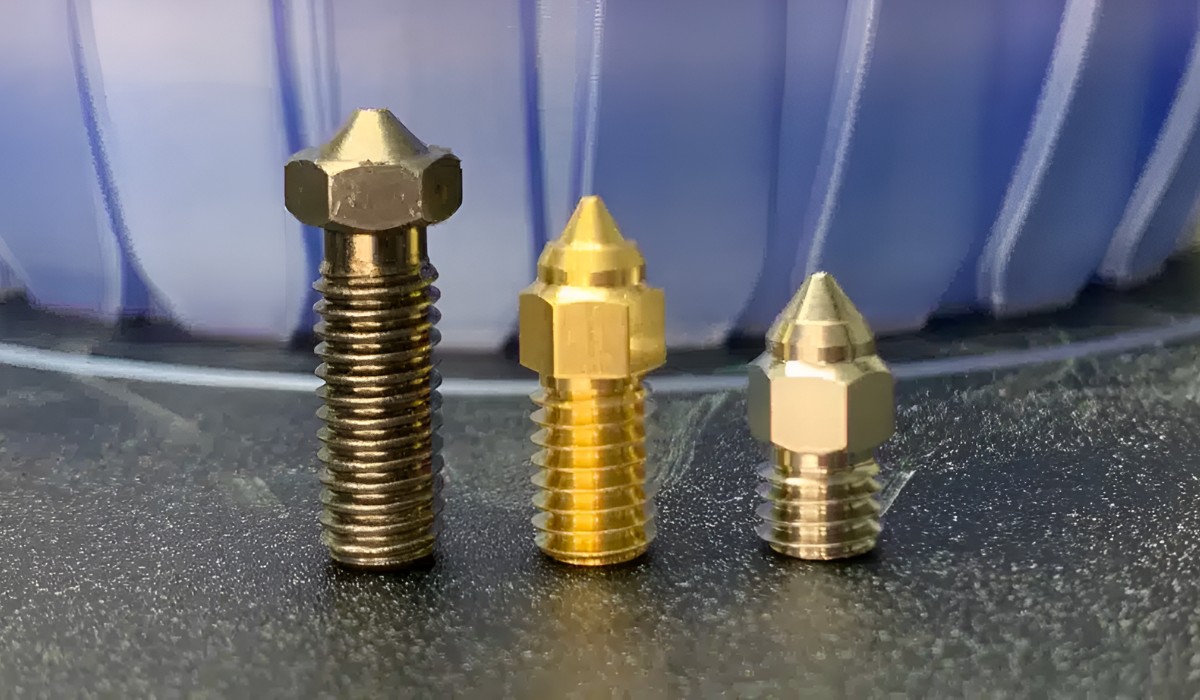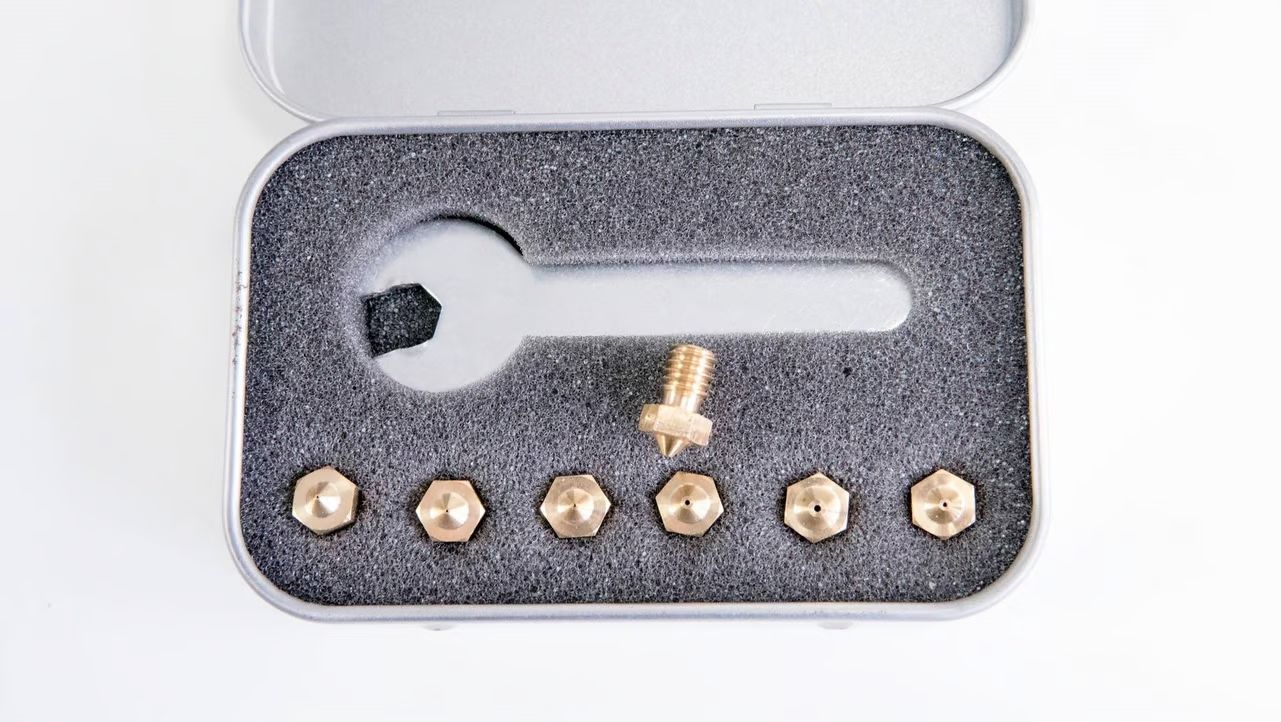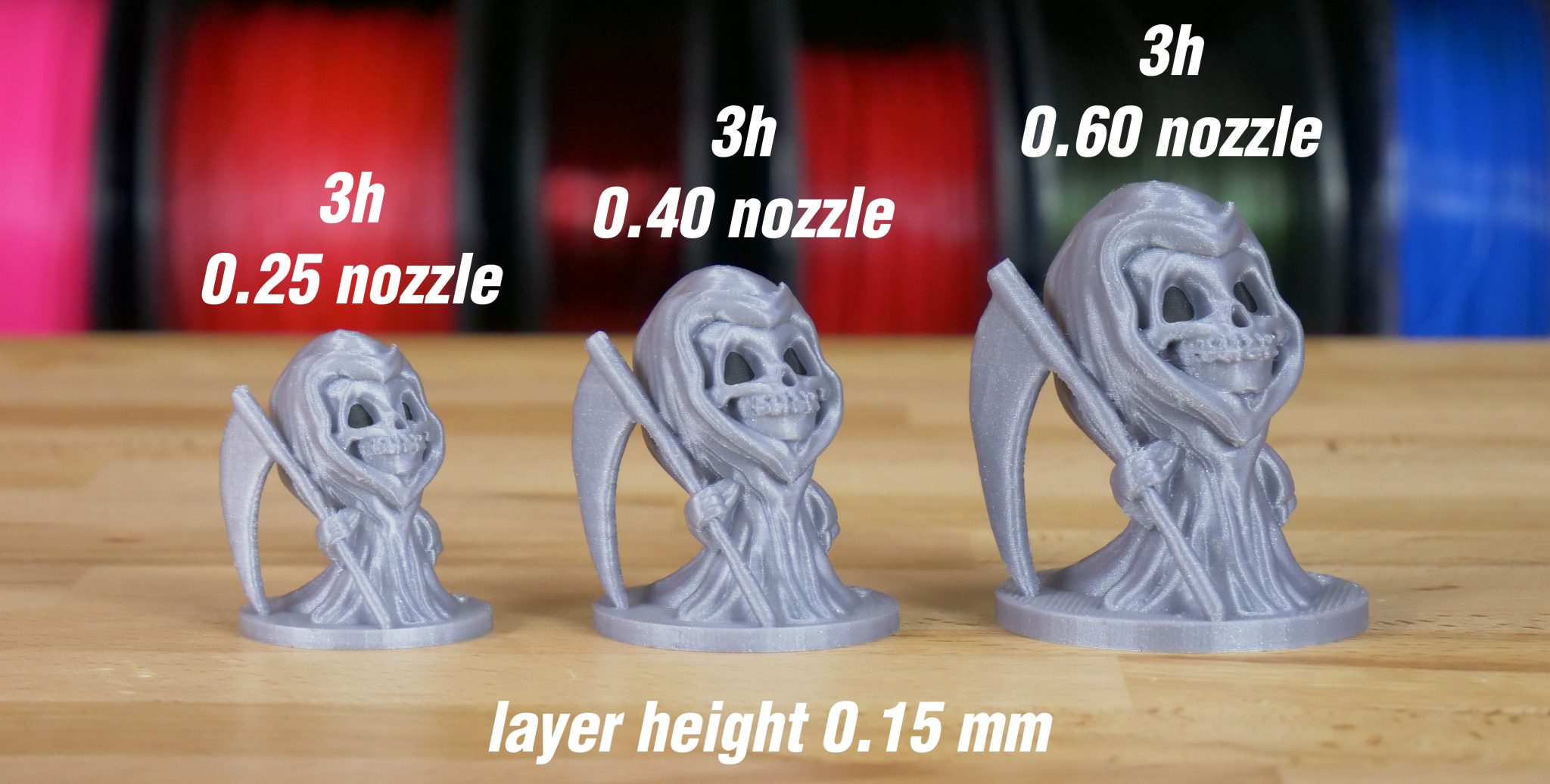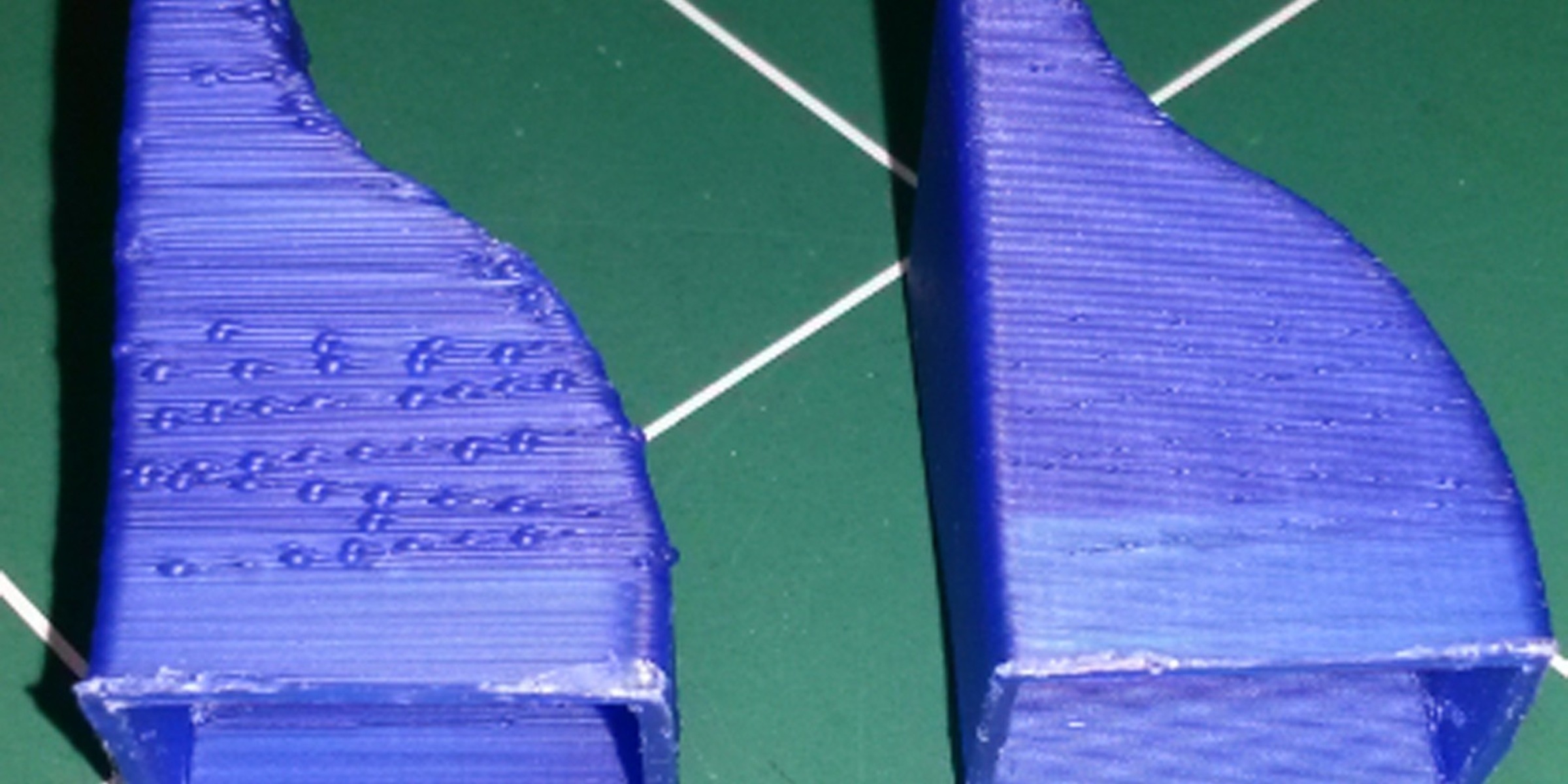Introduction
Welcome to the fascinating world of 3D printing! As a 3D printing enthusiast, you already know that the nozzle is one of the most critical components of your printer. It is responsible for extruding the filament and shaping your designs layer by layer. However, over time, the nozzle can accumulate debris, clogs, and residue that can negatively impact print quality and even damage your printer.
That’s why regular maintenance, including cleaning the 3D printer nozzle, is essential for optimal performance and longevity of your printer. By keeping the nozzle clean, you can ensure precise extrusion and prevent issues like under-extrusion, stringing, and failed prints.
In this article, we will explore the importance of cleaning the 3D printer nozzle, factors that affect the cleaning frequency, signs that indicate your nozzle needs cleaning, and provide you with a step-by-step guide to effectively clean your 3D printer nozzle. We’ll also share some tips and best practices to help you maintain a clean nozzle and achieve excellent print results consistently.
Whether you are a beginner or an experienced 3D printer enthusiast, this article will equip you with the knowledge and skills necessary to keep your printer in top shape and unleash your creativity without any printing hiccups. Let’s dive in!
Why is it important to clean the 3D printer nozzle?
The 3D printer nozzle is a crucial component that directly affects the quality and success of your prints. Keeping it clean is essential for several reasons:
- Improved print quality: Over time, residue from previous prints, dust, and other contaminants can build up inside the nozzle. This buildup can cause uneven extrusion, resulting in flaws like blobs, stringing, or inconsistent layers. Regularly cleaning the nozzle helps ensure smooth and precise filament flow, leading to cleaner and more accurate prints.
- Prevention of clogs: A clogged nozzle is one of the most common issues in 3D printing. It occurs when debris or hardened filament obstructs the path through which the molten filament is extruded. Regular cleaning helps remove any obstructions and prevents clogs from occurring, minimizing downtime and frustration.
- Extended nozzle lifespan: A clean nozzle is less prone to wear and tear. When debris accumulates, it can lead to increased friction and heat buildup, potentially causing damage to the nozzle. By regularly cleaning the nozzle, you can help prolong its lifespan and reduce the need for premature replacement.
- Consistent and reliable printing: A clean nozzle ensures consistent extrusion, which is crucial for achieving consistent and reliable print results. Filament flow disruptions caused by a dirty nozzle can lead to gaps or inconsistent layers, compromising the structural integrity and overall quality of your prints.
- Prevention of cross-contamination: If you switch between different types or colors of filament, it’s important to clean the nozzle thoroughly to avoid cross-contamination. Residual filament left in the nozzle can mix with the new filament, resulting in undesirable color variations or material properties in your prints.
In essence, cleaning the 3D printer nozzle is an integral part of regular maintenance that ensures optimal print quality, prevents clogs, extends the nozzle’s lifespan, and enables consistent and reliable printing. By incorporating nozzle cleaning into your routine, you can keep your printer running smoothly and enjoy the full potential of your 3D printing projects.
Factors that affect the frequency of cleaning
The frequency at which you should clean your 3D printer nozzle can vary depending on several factors. Here are some key factors that can influence how often you need to clean your nozzle:
- Printing material: Different printing materials have different properties that can affect nozzle cleanliness. Some materials, like PLA, are generally less prone to leaving residue or causing clogs compared to materials like ABS or PETG. If you frequently print with materials that are known to be more prone to residue buildup, you may need to clean your nozzle more frequently.
- Print volume: The frequency of nozzle cleaning can also depend on how frequently and how much you use your 3D printer. If you have high print volumes or run extended print jobs regularly, more debris and residue can accumulate in the nozzle, necessitating more frequent cleaning.
- Print quality: If you notice a decline in print quality, such as inconsistencies in extrusion or visible artifacts, it could be an indication that your nozzle needs cleaning. The more frequently you encounter print quality issues, the more often you should clean the nozzle to maintain optimal performance.
- Print settings: Certain print settings can impact the frequency of nozzle cleaning. For example, if you are printing at high speeds or with higher temperatures, there may be an increased likelihood of residue buildup. Adjusting print settings to accommodate for specific materials or print requirements can help minimize the need for frequent cleaning.
- Printer maintenance: Regular maintenance, including nozzle cleaning, is essential to prevent larger issues from arising. A well-maintained printer will generally require less frequent cleaning compared to a printer that is neglected. Following manufacturer guidelines and performing routine maintenance tasks can help keep your nozzle cleaner for longer.
It’s important to note that there is no one-size-fits-all answer to how often you should clean your 3D printer nozzle. It’s a good practice to inspect your nozzle regularly and clean it whenever you notice signs of residue or clogs. By monitoring the factors mentioned above and understanding how they affect your specific printing setup, you can determine the ideal cleaning frequency to maintain optimal print quality and printer performance.
Signs that your 3D printer nozzle needs cleaning
Keeping a close eye on your 3D printer’s performance and being aware of the following signs can help you identify when your nozzle requires cleaning:
- Poor print quality: If you start noticing inconsistencies in your prints, such as gaps in the layers, under-extrusion, or uneven extrusion, it could be an indication of a dirty nozzle. The buildup of debris or filament residue can disrupt the smooth flow of filament, resulting in compromised print quality.
- Stringing or oozing: Excessive stringing or oozing of filament between printed parts or on the surface of the print can be a sign of a partially clogged nozzle. When the nozzle is not clean, filament can leak or not retract properly, leading to stringing or oozing during print transitions or travel moves.
- Frequent print failures or aborted prints: If your prints consistently fail or get aborted midway through the printing process, it could be due to a clogged nozzle. A clog can prevent proper filament flow, causing extrusion issues and ultimately leading to print failures.
- Extruder motor skipping steps: When the nozzle is clogged, the extruder motor may struggle to push filament through the restricted nozzle opening. This can result in the extruder skipping steps, making a clicking sound, or showing signs of reduced filament extrusion.
- Visible residue or discoloration: If you notice a visible buildup of residue or discoloration on the nozzle, it’s a clear sign that cleaning is needed. Residue can accumulate due to burned filament, dust, or other contaminants, impacting the overall performance and print quality.
It’s important to address these signs promptly to prevent further issues and ensure consistent print results. Regularly inspecting your prints and examining the nozzle can help you catch any early signs of buildup or clogging. By cleaning the nozzle when these signs become noticeable, you can maintain optimal print quality and prevent potential problems that could affect your 3D printing journey.
How often should you clean the 3D printer nozzle?
The frequency at which you should clean your 3D printer nozzle can vary depending on several factors, as we mentioned earlier. However, a general guideline is to clean the nozzle every 20-30 hours of print time or whenever you notice signs of residue buildup or print quality issues.
For casual hobbyists or those with lower print volumes, cleaning the nozzle every few weeks or once a month may be sufficient. However, if you are a frequent or professional user with high print volumes, it may be necessary to clean the nozzle more often, such as every 1-2 weeks.
It’s important to remember that prevention is key. Regular nozzle maintenance, including wiping the nozzle with a cleaning filament or using a nozzle cleaning tool, can help prevent debris and residue from accumulating. By incorporating these preventive measures into your printing routine, you may be able to reduce the frequency of deep nozzle cleanings.
Ultimately, the best approach is to monitor your prints closely and watch for signs of deterioration in print quality or any indications of a dirty nozzle. Every printer and printing setup is unique, so it’s essential to find the cleaning frequency that works best for you and your specific circumstances.
Lastly, it’s worth noting that following the manufacturer’s recommendations and guidelines for your specific printer model is always a good practice. Some 3D printers may have specific cleaning procedures or recommended intervals for nozzle maintenance, so be sure to refer to the documentation provided by the manufacturer.
Step-by-step guide to cleaning the 3D printer nozzle
Cleaning the 3D printer nozzle may seem daunting at first, but with the right tools and a methodical approach, it can be a straightforward process. Follow this step-by-step guide to effectively clean your 3D printer nozzle:
- Prepare your workspace: Start by ensuring that your workspace is clean and well-lit. Gather the necessary tools for cleaning, including a nozzle cleaning filament or a nozzle cleaning tool, a pair of tweezers or pliers, and a soft cloth or paper towel.
- Heat up the nozzle: Heat your 3D printer nozzle to the printing temperature of the filament you most commonly use. This will soften any filament residue, making it easier to remove.
- Unload the filament: Once the nozzle reaches the desired temperature, unload the filament from your printer as per the manufacturer’s instructions. This ensures that you can access the nozzle for cleaning without any obstructions.
- Remove excess filament: Use your tweezers or pliers to gently remove any excess filament from the nozzle. Be careful not to damage the nozzle while doing this.
- Insert the cleaning filament or tool: Insert the cleaning filament into the nozzle or use a nozzle cleaning tool that is specifically designed for your printer. Follow the manufacturer’s instructions on how to insert the tool properly. This tool will help remove any debris or residue that may be clogging the nozzle.
- Clean the nozzle: Push the cleaning filament or use the nozzle cleaning tool to clean the inside of the nozzle in a gentle, back-and-forth motion. Make sure to cover the entire length of the nozzle to remove any blockages or residue. Repeat this process a few times if necessary.
- Wipe the nozzle: After cleaning, use a soft cloth or paper towel to wipe away any excess filament or debris from the nozzle. Ensure that the nozzle is completely dry before moving on to the next step.
- Reload the filament: Once the nozzle is clean and dry, follow your printer’s instructions to reload the filament and prepare for your next print job.
- Perform a test print: Finally, run a test print to ensure that the nozzle is extruding filament smoothly and that your prints are of high quality. This will help verify that the cleaning process was successful.
By following these steps and incorporating regular nozzle cleaning into your 3D printing routine, you’ll be able to maintain a clean and efficient nozzle, ensuring optimal print quality and a smooth printing process.
Tips and best practices for maintaining a clean nozzle
Maintaining a clean nozzle is essential for achieving high-quality prints and maximizing the lifespan of your 3D printer. Here are some tips and best practices to help you keep your nozzle clean:
- Use quality filament: Using high-quality filament can reduce the likelihood of residue buildup and clogs. Cheap or low-quality filaments may contain impurities or inconsistent composition, leading to more frequent cleaning requirements.
- Perform regular visual inspections: Take a close look at the nozzle and surrounding areas before and after each print. Look out for any signs of residue buildup or discoloration on the nozzle. If you notice anything unusual, clean the nozzle promptly.
- Choose appropriate print settings: Adjusting print settings like temperature, print speed, and retraction distance can help minimize the chances of nozzle clogs or excessive residue buildup. Experiment with different settings to find the optimal balance for your specific printer and filament.
- Perform preventive maintenance: Regularly wipe down the outside of the nozzle with a soft cloth or paper towel to remove any debris or filament residue. This preventive measure can help reduce the chances of residue entering the nozzle and causing issues during printing.
- Use a filament cleaner or dust filter: Installing a filament cleaner or dust filter in your printer’s filament path can help trap dust and debris before it reaches the nozzle. This can prevent clogs and improve overall print quality.
- Keep your filament dry: Moisture can negatively affect filament performance and potentially lead to clogged nozzles. Store your filament properly in a dry environment using airtight containers or desiccant packs to absorb any moisture.
- Regularly change the nozzle: Nozzles can wear out over time, leading to decreased print quality and potential clogs. It’s a good practice to periodically replace your nozzle, especially if you notice a decline in print quality even after cleaning.
- Follow manufacturer guidelines: Different printers may have specific cleaning and maintenance instructions provided by the manufacturer. Be sure to follow these guidelines to ensure that you are using the recommended methods and materials for cleaning your particular printer model.
By implementing these tips and best practices, you can effectively maintain a clean nozzle, minimize print issues, and enjoy consistent and high-quality 3D prints. Regular maintenance and attention to the cleanliness of your nozzle will go a long way in ensuring a smooth printing experience and excellent print results.
Conclusion
Cleaning the 3D printer nozzle is a crucial aspect of maintaining optimal print quality and achieving successful 3D prints. By keeping the nozzle clean and free from debris and residue, you can minimize the chances of clogs, ensure consistent filament flow, and extend the lifespan of your 3D printer.
In this article, we discussed the importance of cleaning the nozzle and the factors that can affect the frequency of cleaning. We explored the signs that indicate your nozzle needs cleaning and provided a step-by-step guide on how to clean the nozzle effectively. Additionally, we shared some tips and best practices to help you maintain a clean nozzle and achieve excellent print results consistently.
Remember, regular maintenance and attention to the cleanliness of your nozzle are key to a smooth and trouble-free printing experience. By incorporating nozzle cleaning into your routine and following the manufacturer’s guidelines, you can keep your 3D printer in top shape and unleash your creativity without any printing hiccups.
So, take the time to inspect your nozzle, clean it when necessary, and implement preventive measures to minimize the chances of residue buildup and clogs. With a clean nozzle, you’ll be well on your way to producing stunning 3D prints with precision and reliability.







